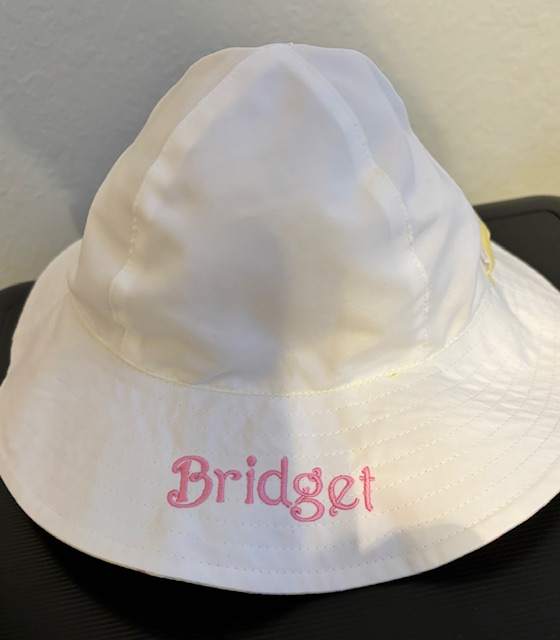Individualized Lab Coats with Embroidery for Medical Professionals
Individualized Lab Coats with Embroidery for Medical Professionals
Blog Article
The Art of Personalized Needlework: Opening the Tricks to Creating Special and Remarkable Styles
Needlework, a craft steeped in tradition and virtuosity, holds within its detailed stitches the power to transform material right into a canvas of special expression. The keys to producing custom-made needlework styles that astound the eye and leave an enduring impact depend on a fragile balance of method, creative thinking, and focus to information. As we explore the globe of personalized needlework, we discover the nuanced interplay in between string option, stitch complexity, and design personalization that elevates a simple garment to an artwork. Join us on a journey through the art of custom-made embroidery as we decipher the mysteries behind crafting absolutely memorable and distinctive creations.
Picking the Right Embroidery Threads
When picking needlework threads, what crucial aspects should you think about to make sure the ideal results for your custom designs? The selection of needlework string is vital in establishing the final outcome of your embroidered design.
Moreover, the weight or density of the thread plays a significant role in the look of the needlework. Thicker strings can add measurement and appearance to your style, while finer threads are optimal for intricate details and little message. Furthermore, thinking about the shade fastness and washability of the thread is crucial to make sure that your custom designs keep their quality and vibrancy over time. By meticulously evaluating these factors and picking high-quality threads that satisfy your certain demands, you can enhance the aesthetic charm and long life of your embroidered developments.
Exploring Various Stitch Methods
To explore the world of 'Checking out Different Stitch Methods', one must grasp the complexities and nuances that each sewing technique gives the art of embroidery. Various stitch strategies not just include visual rate of interest however likewise contribute to the general texture and measurement of the style. One prominent stitch strategy is the satin stitch, which includes closely stuffed parallel stitches to create a smooth and shiny surface, ideal for filling in shapes and producing vibrant outlines.
On the other hand, the backstitch is a versatile method usually used for detailing and including fine details. It involves sewing backwards to produce a solid line of embroidery. Additionally, the French knot stitch includes a responsive aspect to layouts, ideal for producing textured accents like blossom centers or decorative touches.
Checking out different stitch techniques enables embroiderers to have fun with light, shadow, and deepness within their designs, raising the visual appeal and creative high quality of their embroidery jobs. By understanding various sewing techniques, one can unlock endless possibilities for developing one-of-a-kind and remarkable customized embroidery pieces.
Incorporating Personalized Layout Aspects
Having actually explored the ins and outs of various stitch techniques such as the satin stitch, backstitch, and French knot, the focus now moves in the direction of incorporating personalized style components in personalized embroidery projects. Customized design elements play an essential role in making embroidery projects absolutely special and memorable.
An additional method to include individualized design elements is by including icons or themes that hold unique meaning to the recipient or reflect their interests and individuality. Incorporating a favorite flower, animal, or hobby-related symbol can make the embroidery style a lot more meaningful and personalized. In addition, selecting colors that resonate with the recipient or align with go the designated style can additionally improve the personalization of the needlework task.
Understanding the Art of Shade Control

One key element of shade coordination is recognizing shade concept. This includes understanding exactly how various shades engage with each various other, the emotions they convey, and how they can be integrated to produce visually appealing layouts. By applying color concept principles, embroiderers can develop harmonious color schemes that enhance the total look of the style.
Furthermore, focusing on contrast is critical in shade coordination. Making use of contrasting colors can aid certain elements of the layout pop, boost legibility, and produce a visually vibrant needlework piece. By mastering the art of color coordination, embroiderers can raise their styles and develop unforgettable items that resonate with customers and visitors alike.
Enhancing Appearance With Advanced Needlework Stitches
French knots, for example, are best for including little, elevated dots to your layout, imitating the look of grains or creating a textured surface. Bullion knots, on the other hand, can be utilized to develop twisted, ropelike elements that add an elegant feeling to the needlework. Seed sewing involves tiny, scattered stitches that can complete areas with a multicolor appearance, while turkey work develops cosy, dimensional accents evocative animal fur or vegetation. Experimenting with these innovative needlework stitches enables you to push the borders of conventional needlework and develop absolutely distinct and aesthetically appealing structures in your styles.
Conclusion
Finally, the art of customized embroidery entails a combination of choosing the appropriate strings, checking out various stitch strategies, integrating personalized layout elements, mastering color sychronisation, and enhancing texture with advanced stitches. By recognizing and carrying out these crucial components, embroiderers can create one-of-a-kind and unforgettable designs that display their imagination and skill. Needlework enthusiasts can open the tricks to creating gorgeous and custom items that stand out and leave a long-term perception.
Report this page